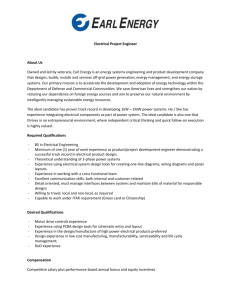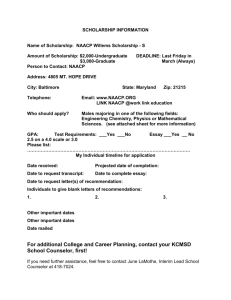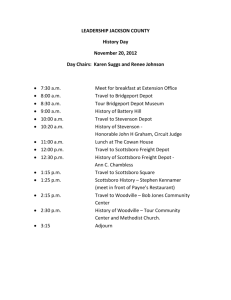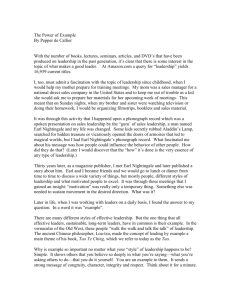1 The Long Civil Rights Movement, Dr. Aaron Sheehan-Dean
advertisement
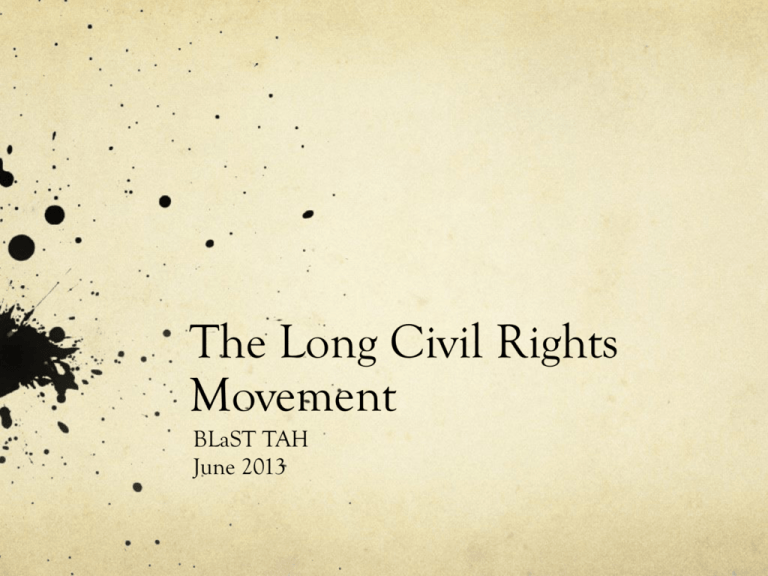
The Long Civil Rights Movement BLaST TAH June 2013 I. Race in the South A. Actors 1. 2. 3. 4. 5. 6. NAACP Federal government Black grass roots Southern white liberals Southern white moderates Southern white conservatives B. Context 1. Cold War 2. Economically robust US and South 3. Shifting political coalitions II. National context A. Politics B. Challenges to the order C. An American Dilemma D. Truman III. NAACP led legal campaigns before 1954. A. Educational inequalities. B. Weak spots – graduate education C. Due process (Scottsboro Boys) D. White primary. Smith v. Allwright (1944) IV. Brown v. Topeka Board of Ed. A. Evidence of segregation’s effect? B. Earl Warren C. Implementation D. “Black Monday” FDR A. Philip Randolph Southern Moderates Southern Conservatives (at integration of Ole Miss, 1963 The Cold War Commission on Interracial Cooperation Charles Hamilton Houston Howard University Law School Faculty $70.00 $60.00 $50.00 $40.00 $30.00 $20.00 $10.00 $0.00 White students Black students National Avergage Per Student Spending, 1935-36 Paxville, South Carolina White School Paxville, South Carolina Black School University of Maryland Law School The “Scottsboro Boys” Chief Justice Harlan Fisk Stone "The United States is a constitutional democracy. Its organic law grants to all citizens a right to participate in the choice of elected officials without restriction by any state because of race. This grant to the people of the opportunity for choice is not to be nullified by a state through casting its electoral process in a form which permits a private organization to practice racial discrimination in the election." Kenneth Clark “We conclude, unanimously, that in the field of public education the doctrine of ‘separate but equal’ has no place. Separate educational facilities are inherently unequal.” Chief Justice Earl Warren The unwarranted decision of the Supreme Court in the public school cases is now bearing the fruit always produced when men substitute naked power for established law… We regard the decision of the Supreme Court in the school cases as clear abuse of judicial power. It climaxes a trend in the Federal judiciary undertaking to legislate, in derogation of the authority of Congress, and to encroach upon the reserved rights of the states and the people… This interpretation [Plessy v. Ferugson], restated time and again, became a part of the life of the people of many of the states and confirmed their habits, customs, traditions and way of life. It is founded on elemental humanity and common sense, for parents should not be deprived by Government of the right to direct the lives and education of their own children… This unwarranted exercise of power by the court, contrary to the Constitution, is creating chaos and confusion in the states principally affected. It is destroying the amicable relations between the white and Negro races that have been created through ninety years of patient effort by the good people of both races. It has planted hatred and suspicion where there has been heretofore friendship and understanding. Without regard to the consent of the governed, outside agitators are threatening immediate and revolutionary changes in our public school systems. If done, this is certain to destroy the system of public education in some of the states… We pledge ourselves to use all lawful means to bring about a reversal of this decision which is contrary to the Constitution and to prevent the use of force in its implementation. In this trying period, as we all seek to right this wrong, we appeal to our people not to be provoked by the agitators and troublemakers invading our states and to scrupulously refrain from disorder and lawless acts. Southern Manifesto What is the message of the Congressmen who signed the manifesto? What is their attitude? Fearful? Confident? How do they use history in their argument? What is to be done with outside meddlers?
